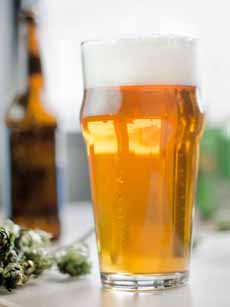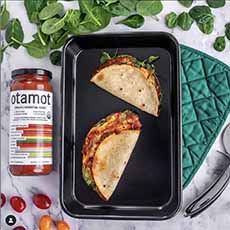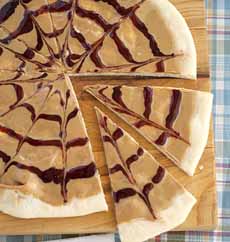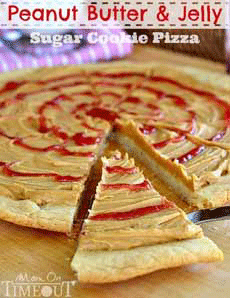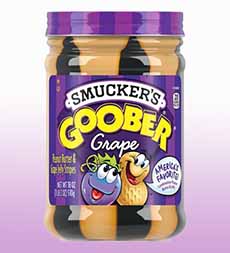|

[1] Serve croissants or any bread products with lemon curd—including a raisin bagel (all photos © Bonne Maman).
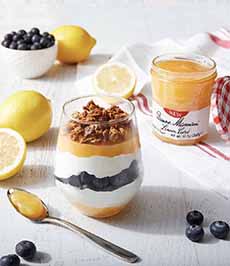
[2] A yogurt parfait with layers of lemon curd.

[3] Mini cheesecakes topped with lemon curd.

[4] Cake-in-a-jar: Layer strawberry preserves, cake, lemon curd, cake, and lemon curd.
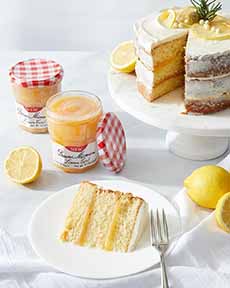
[5] Lemon curd is a great cake filling.
 [6] Lemon curd is an easy “fancy” dessert: Just buy mini tart shells and fill with curd.
[6] Lemon curd is an easy “fancy” dessert: Just buy mini tart shells and fill with curd.
|
|
This tip is about lemon curd, but you can make fruit curds from any fruit that can be juiced (berries*, lime, grapefruit, orange, passionfruit, pineapple, mango, etc.)
Lemon is the most common, but the others are just as delicious.
There are some good store-bought lemon curds, but they are nowhere as good as homemade. Commercial lemon curds may also include thickeners (such as cornstarch; these dilute the flavor and quality of lemon curd), preservatives, colors, and flavorings.
And it’s so easy to make: four basic kitchen ingredients and 10 minutes on the stove. (It’s five ingredients if you count lemon juice and zest separately.)
Lemon curd is one of those foods that are so seductive, you can eat them by the spoonful from the jar.
Curd is a bread spread and filling for baked goods, but it’s slightly different from jelly, jam and preserves.
Lemon curd is made from lemon juice, and other types of fruit curds can be made with citrus fruits like grapefruit, limes, oranges, or tangerines. The addition of an egg yolk turns it into a custard.
Curds also can be made with other fruits, such as berries, mango and passionfruit.
For food geeks: Technically, lemon curd is a custard. Custard is defined by any liquid (here, lemon juice) thickened by eggs. In most cases, the liquid is cream or milk.
Jelly also begins with fruit juice, but jells it with pectin.
Jam and preserves are made by cooking down chopped fruit or the whole fruit (e.g. berries).
Here are the differences between jam, jelly, marmalade, preserves and all the different bread spreads.
USES FOR LEMON CURD
Lemon curd is a probably best known for serving with scones at afternoon tea. But that’s just one of the numerous ways to enjoy lemon curd.
Bread spread: croissants, muffins, scones, toast.
Cake: a dollop with angel cake, gingerbread, quick breads.
Cake filling: for for angel food cake, genoise/sponge cake, layer cake and pound cake.
Cookies: a spread sables and shortbread, a filling for thumbprints and sandwich cookies.
Cream puffs and eclairs.
Cupcake toppings and centers.
Crêpe filling.
Garnish for fruit salad.
Pancake and waffle topping.
Pies and pastry: napoleons, lemon meringue pie (but with lemon pie, the filling is a thickened with cornstarch).
Tart, tartlet or mini-tart filling.
Yogurt and cottage cheese topping or mix-in.
RECIPE: LEMON CURD
Some of the best lemon curds are made with the zest and sweeter juice of Meyer lemons. However, they are seasonal; November through May.
Don’t let that stop you from making them from supermarket Eureka or Lisbon lemon varieties (the different types of lemons).
This recipe is courtesy of Taste Of Home.
Ingredients
3 large eggs
1 cup sugar
1/2 cup fresh lemon juice (about 2 lemons) or 3-5 Meyer lemons
1/4 cup butter, cubed
1 tablespoon grated lemon zest
Preparation
1. WHISK together in a small heavy saucepan over medium heat, the eggs, sugar and lemon juice. Stir until blended.
2. ADD the butter and lemon zest. Cook, whisking constantly, until the mixture is thickened and coats the back of a metal spoon.
3. TRANSFER to a bowl; or to store, place in a clean container with a lid. Cool for 10 minutes. Refrigerate, covered, until cold.
THE HISTORY OF LEMON CURD
The first written mention of lemon curd appears in England in 1844, in The Lady’s Own Cookery Book by Lady Charlotte Campbell Bury.
This early recipe is different from today’s lemon curd. It is literally curds: lemon juice added to cream to form curds.
The curds were then be separated from the whey through cheesecloth.
Although still called curd, today’s recipe evolved to a velvety custard spread, made with by the combination of lemon, sugar, eggs and butter.
If you read U.K. articles, you may come across mentions of lemon cheese instead of lemon curd.
There is no technical or legal difference between the two. They contain the same ingredients and are cooked the same way.
Some people claim that lemon curd is a little runnier and more tart, while lemon cheese has a more buttery taste.
However, these may be due to slight differences in regional recipes. “Cheese,” like “curds,” is a throwback to the original recipe, the appearance of which was similar to cottage cheese.
Experts agree, though, that the difference is so subtle, very few people could distinguish between the two.
There is also a product called lemon honey: the same recipe with honey substituted for the sugar [source].
|


